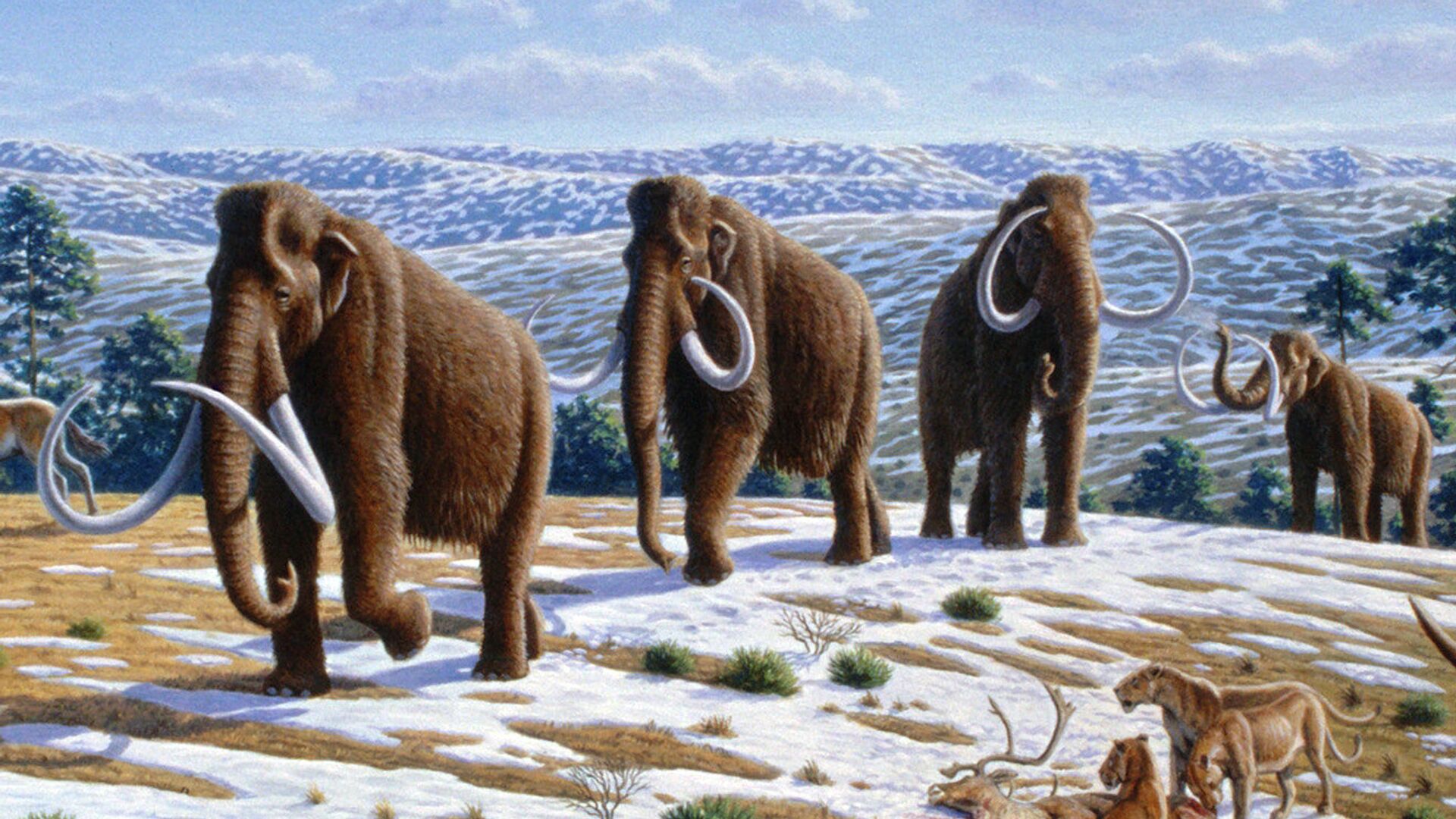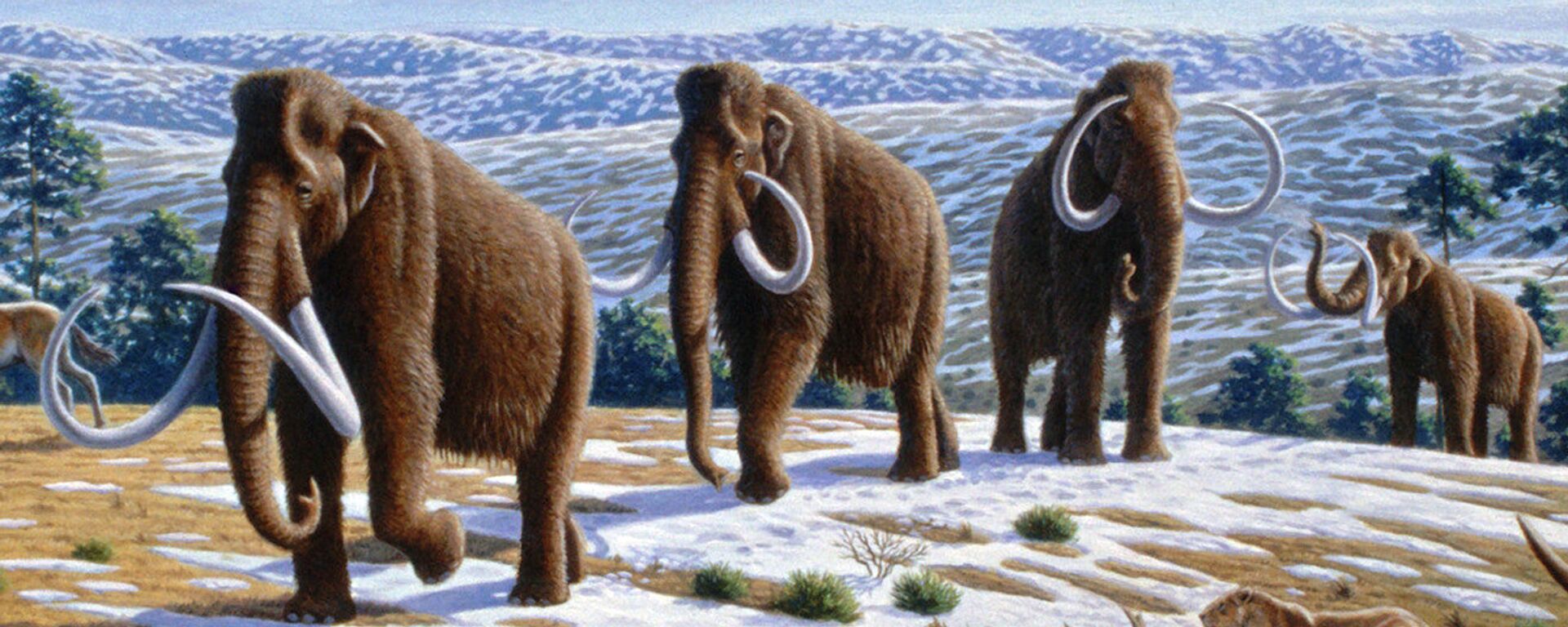https://sputnikglobe.com/20220822/tech-start-up-seeks-to-bring-back-woolly-mammoth-to-restore-grasslands-in-arctic-1099872742.html
Tech Start-Up Seeks to Bring Back 'Woolly Mammoth' to Restore Grasslands in Arctic
Tech Start-Up Seeks to Bring Back 'Woolly Mammoth' to Restore Grasslands in Arctic
Sputnik International
With the use of gene editing, the company behind the scheme intends to produce a hybrid version of an Asian elephant that would be resistant to cold and that... 22.08.2022, Sputnik International
2022-08-22T18:56+0000
2022-08-22T18:56+0000
2022-08-22T18:56+0000
science & tech
mammoth
elephant
gene editing
arctic
https://cdn1.img.sputnikglobe.com/img/104368/47/1043684782_0:30:1320:773_1920x0_80_0_0_adfc882f9a94d8b0541b628efcfdd957.jpg
A US start up called Colossal Biosciences seeks to give rise to a breed of massive beasts similar in both appearance and core biological traits to the long-extinct woolly mammoth.While the creature would not be an exact replica of a mammoth, but rather a genetically engineered version of an Asian elephant, it would supposedly be able to thrive in the same ecosystem mammoths once lived in.George Church, professor of genetics at Harvard Medical School who launched the start-up together with tech entrepreneur Ben Lamm, explained to Newsweek that they intend to use gene editing technology in their endeavor, after researchers identify the key differences between the genomes of the Asian elephant and woolly mammoth.As the magazine points out, Colossal Biosciences is also working on an alternative method that would involve developing the hybrid animal in an artificial womb rather than using a surrogate mother.Church also noted that "the point is not to resurrect a species, but to resurrect individual genes in a constellation that would help specifically with cold tolerance."Colossal Biosciences hopes to introduce these hybrid animals into the Arctic in a bid to revitalize the environment there and to decelerate the melting of the permafrost, as the extinction of mammoths led to a reduction of grasslands, which "efficiently absorbed carbon," in that part of the world, the magazine adds.
https://sputnikglobe.com/20220628/perfect-and-beautiful-remains-of-baby-mammoth-found-in-canada-1096768194.html
Sputnik International
feedback@sputniknews.com
+74956456601
MIA „Rossiya Segodnya“
2022
News
en_EN
Sputnik International
feedback@sputniknews.com
+74956456601
MIA „Rossiya Segodnya“
Sputnik International
feedback@sputniknews.com
+74956456601
MIA „Rossiya Segodnya“
science & tech, mammoth, elephant, gene editing, arctic
science & tech, mammoth, elephant, gene editing, arctic
Tech Start-Up Seeks to Bring Back 'Woolly Mammoth' to Restore Grasslands in Arctic
With the use of gene editing, the company behind the scheme intends to produce a hybrid version of an Asian elephant that would be resistant to cold and that could thrive in Arctic conditions.
A US start up called Colossal Biosciences seeks to give rise to a breed of massive beasts similar in both appearance and core biological traits to the long-extinct woolly mammoth.
While the creature would not be an exact replica of a mammoth, but rather a genetically engineered version of an Asian elephant, it would supposedly be able to thrive in the same ecosystem mammoths once lived in.
George Church, professor of genetics at Harvard Medical School who launched the start-up together with tech entrepreneur Ben Lamm, explained to Newsweek that they intend to use gene editing technology in their endeavor, after researchers identify the key differences between the genomes of the Asian elephant and woolly mammoth.
"We'd typically use CRISPR [Clustered Regularly Interspaced Short Palindromic Repeats], or a variety of other editing tools, to edit the cell by going in and adding DNA. And then we take the nucleus out of that cell and put it into an egg," Church said. "Then we implant that into a surrogate mother and wait, in the case of elephants, 22 months. Then you've got a calf. That's classical cloning, as was done with Dolly the Sheep."
As the magazine points out, Colossal Biosciences is also working on an alternative method that would involve developing the hybrid animal in an artificial womb rather than using a surrogate mother.
Church also noted that "the point is not to resurrect a species, but to resurrect individual genes in a constellation that would help specifically with cold tolerance."
Colossal Biosciences hopes to introduce these hybrid animals into the Arctic in a bid to revitalize the environment there and to decelerate the melting of the permafrost, as the extinction of mammoths led to a reduction of grasslands, which "efficiently absorbed carbon," in that part of the world, the magazine adds.
"Elephants tend to knock down trees, and hence restore grasslands. So, there'll be a mixture of trees and grass, rather than right now, there's almost no grass," Church remarked. "The main side effect that we're interested in is the maintenance of cold arctic soil by [elephants] trampling the snow to let the cold air in in the winter."


